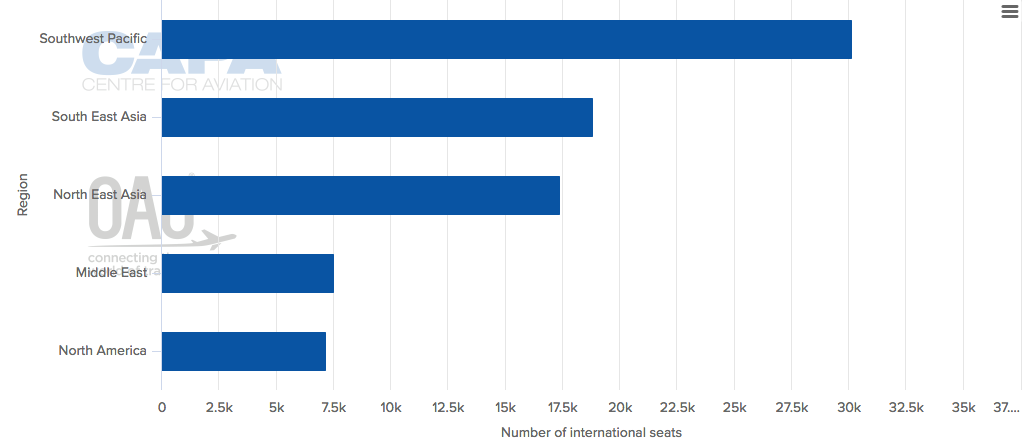However, the most anticipated infrastructure and investment exercise being carried out is its 3300x60m runway project, on track for completion in 2020. The project will double the airport's capacity, escalate its economic and tourism contribution on both a state and Federal level, and open new opportunities to fill route development aspirations.
To hear more about the booming Brisbane market, join us at the 2018 CAPA Queensland Aviation & Corporate Travel Summit, register at the following link.
Significant ground facility improvements commenced on site in 2012, enabling a number of work fronts across the site to get underway later in 2017. The investment, totalling AUD1.3 billion (USD1.02 billion) over eight years, is the largest aviation project currently under construction in Australia. Works are not just limited to the runway, with the project also comprising:
- Up to 12km of concrete taxiways;
- Many kilometres of airside roads, drains, airfield lighting and signage;
- Navigation aids, including an Instrument Landing System (ILS) and high intensity lighting at either end of the runway;
- 300ha of landscaping to grass all non-paved areas of the airfield;
- A four-lane underpass structure.
The runway will raise annual aircraft movements from 227,000 to 360,000 in 2035, and support projected growth from 23.2 million in 2017 to around 50 million passengers by 2034.
Economic value
According to data extrapolated from the CAPA Construction Database, Brisbane Airport's overall works aggregate an investment of USD3.6 billion. Among these include the new runway, a hotel & conference centre, new airline lounges, a logistics facility and the previously mentioned terminal expansion schemes. Of all incomplete infrastructure works ongoing at 37 existing Australian airports, Brisbane Airport accounts for almost 21% of investment.
The aerodrome's current AUD4 billion (USD3.15 billion) annual economic contribution to the State of Queensland stands to grow even heftier thanks to the runway, according to Brisbane Airport Corporation parallel runway project director, Paul Coughlan. Mr Coughlan told the Blue Swan Daily: "Once the runway is operational its long term value as an economic driver for the region and Australia can begin to be realised. The growth in travel, business and services that the new runway's additional capacity will bring has been estimated to contribute up to AUD5 billion (USD3.94 billion) a year and 8000 new jobs to the regional economy by 2035".
Mr Coughlan refers to added economic value added only by the runway itself. In total, an expanded Brisbane Airport is expected to contribute AUD8.2 billion (USD6.46 billion) to the Queensland economy each year and AUD13.4 billion (USD10.6 billion) to the Australian economy annually by 2034.
Room for route expansion - Brisbane to be an appealing option for airlines
Brisbane Airport has previously expressed interest in using its new runway infrastructure to expand to more Asia Pacific destinations, specifically Japan, China and India. According to CAPA and OAG scheduling data, Brisbane Airport already serves four destinations in China, and one route in Japan. Still, international departures from Brisbane congregate primarily in the Southwest Pacific and Southeast Asia:
Brisbane Airport international departing seats by region w/c 05-Feb-2018
 Source: CAPA - Centre for Aviation and OAG
Source: CAPA - Centre for Aviation and OAG
Of particular significance is Brisbane Airport's interest in a route to India. Currently, the only non-stop routes between Australia and India is Air India's four times weekly Delhi-Sydney service, and three times weekly Delhi-Melbourne service. According to the Australian Bureau of Statistics, the most popular country of birth for residents in Queensland after Australia, New Zealand and England is India, with 50,000 residents. An opportunity could exist for Air India or Qantas to operate to India with Dreamliner aircraft, with the potential route just one of many long haul opportunities Brisbane Airport could boasting in the future.